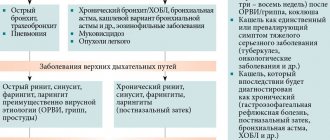Often the mammary glands of one woman have different sizes. Unless it's noticeable, few women sound the alarm. However, it also happens that the difference is very noticeable. And then many representatives of the fair sex begin to look for methods to combat this problem.
Different breasts
It can arise for several reasons at once, and it is very difficult to correct. It is even possible that only mammoplasty - surgery on the mammary glands - will help. However, there are other options, and we will look at them here.
Causes
What are the causes of different breast sizes? This problem can occur for various reasons. However, the main one is the difference in stimulation during feeding.

Often breast asymmetry occurs due to the fact that a woman feeds only one breast.
The method for correcting such asymmetry is determined by the cause of its occurrence. The easiest way is if the root of this problem is predominant feeding on one side. If the reason is something else, the problem is more difficult to fix.
Improper breastfeeding is not the only cause of breast asymmetry. Every woman's mammary gland dimensions vary at least slightly. On the other hand, this is not always obvious. And the difference quite rarely exceeds one size.
But if it exceeds, then this is a congenital disease. Here on the mammary gland there is either hypoplasia (it is small) or hyperplasia (too large).
The cause of the problem may be a different structure of the mammary glands. They may differ in the width of the ducts, the number of milk sinuses, even the appearance of the nipple. In addition, breasts may produce different amounts of milk. The breast from which it is more convenient for the baby to suck and/or in which milk is produced more abundantly is sure to be loved by the baby. Here the mother needs to be firm, not allowing him to feed from only one breast, if she does not want to get a difference in the size of the mammary glands.
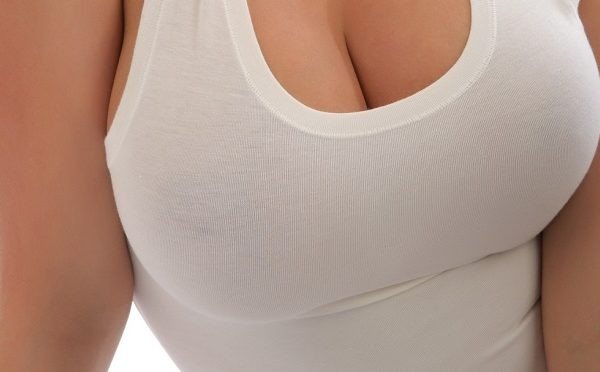
Breasts may vary in size from birth
If a woman has suffered an injury near the mammary glands or this area is inflamed, this can also affect symmetry, and not at all for the better. Self-medication of mastitis and/or lactostasis with camphor/vodka compresses is also very harmful: they will cure this problem, but the milk will disappear. After all, such compresses contain substances that act opposite to oxytocin.
Successful breastfeeding also requires proper latching of the baby, otherwise cracks and injuries will soon appear on the nipples. Moreover, both will hurt. And no mother wants pain when feeding. Those lead to stress. And it either leads to the release of adrenaline, and therefore to the cessation of milk production or to the baby’s refusal of the sore breast.

Mastitis
Correctness is required even when expressing milk. Moreover, it is better to do this only when necessary. And if you have to express, then you should express the same amount of milk from each breast.
Where does the congenital problem with breast difference come from?
The most common cause of this problem is a congenital anomaly. It can often be seen in teenage girls. However, by the age of twenty, the difference usually evens out.
Otherwise, in order to correct the matter, you will have to take some measures. Otherwise, sooner or later a woman’s hormonal levels will definitely change, which will only worsen the situation.

Anomalies in breast development are often noticeable in teenage girls.
To prevent this, you need to monitor how a girl's breasts develop while she is still a teenager.
Different breasts in teenage girls
Going to the doctor is not harmful for a teenager or an immature woman. A teenager because the glands may develop normally, but they may not.
In a teenager, a doctor can diagnose:
- Unilateral hypoplasia (insufficient development of one gland, while the other is normal);
- And vice versa, normal development of one gland and excessive development of another;
- Prolapse (asymmetry) of one of the glands;
- Disorders of the muscular skeleton and bones in the chest area;
- Tubularity (this is a situation where the chest looks like a tube or tube);
- Change (increase in the volume and shape of one gland) while the other is normal.
The solution to this problem is surgery. But you will have to wait until adulthood and the moment when the second breast is fully formed. It's time for a grown lady to think about tumors. It's better when they are not there. But it's worth checking.
Three causes of acquired breast asymmetry
Acquired reasons may be:
- mechanical injury to one or another breast, stopping its development. Most often this happens during sports training;
- pathologies, for example, various tumors. If the mammary gland shrinks due to tumor growth there, surgery is necessary;
- improper lactation. Due to uneven milk production or other reasons, the baby sucks predominantly on one breast.
If a woman suspects that she has a hormonal imbalance and/or a tumor, she should immediately go to the clinic.

If you suspect problems with hormonal levels, you should immediately consult a doctor
First of all, you need to find out why the breasts are asymmetrical.
It is impossible to draw any conclusion about whether a woman has contracted cancer without an examination prescribed by a gynecologist or mammologist. The doctor palpates and then may refer the woman for an ultrasound. If the suspicions are serious, a biopsy will be required. And then the doctor will draw up a therapeutic plan.
If there is a difference when feeding the baby, the woman must carefully observe breast hygiene. The baby should be fed evenly from each breast, and from the very moment he was born. The mother must also ensure that the child first sucks the entire volume of milk from one mammary gland, then takes on the other. And you also need to express the baby’s nutritious fluid equally.

It is necessary to maintain breast hygiene when feeding
A fairly common cause of asymmetry is a difference in the tension of the muscles holding the chest. If you load your right arm more, then the right pectoral muscle is loaded more, and therefore pumped up more. An even load on both hands will help here.
If a woman’s asymmetry due to injury/lactation does not go away, plastic surgery will come to the rescue. She can change the size of the breast in one direction or another, as well as correct both mammary glands.
With a minor flaw, the right bras and accessories can help.
If you hide breast asymmetry behind them, you don’t have to worry about it being noticed.

To correct this problem, you can turn to plastic surgery.
How to fix
The reasons why anomalies arise affect the restorative methods. This is usually surgery. An insignificant, almost imperceptible effect is provided by exercises to strengthen the muscles of the chest, a special diet, and massage.
Surgery has limitations. The appropriateness of such treatment is discussed with the patient.
- Surgical methods are unacceptable when carrying a child. There is a high risk that this will lead to undesirable consequences, such as premature birth. In this case, aesthetic correction should be postponed. The exception is the formation of a malignant tumor.
- Aesthetic surgery is used for correction if there is a secondary type of pathology. Treatment is usually selected taking into account individual indicators. The factors that contributed to the development of breast asymmetry are studied. The extent of the anomaly is being determined.
- Plastic surgery of the mammary glands is performed when there are congenital changes, such as micromastia, hypermastia. Genetic breast asymmetry, such as developed ptosis, can also be corrected.
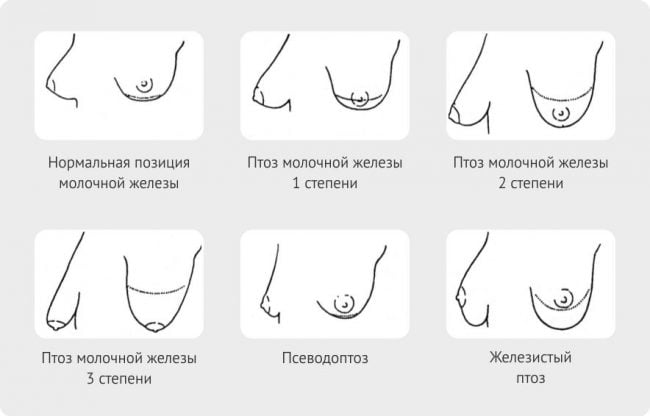
Injuries can lead to asymmetry. Then reconstructive surgery is used, prostheses or implants are used. Constant pressure should not be allowed in the area of the glands; this can trigger the process of tumor formation.
Asymmetry that occurs during lactation
Breast asymmetry resulting from lactation is a fairly common problem for young mothers. But this is no reason to worry. This is the norm due to the fact that the glands do not produce the same amount of milk. And therefore there is nothing strange if breast sizes change.
To correct the situation, you must first identify the breast that is more favorite with your baby. This can be determined with high probability by looking at the size of the glands: the one you are looking for will be larger. Pumping milk from the breast, whether into the baby's body or through pumping, stimulates higher milk production.

It is necessary that the baby sucks milk from each breast, and not just from one
There are some general feeding rules:
- control the feeding process so that the baby eats correctly;
- from the very first time, feed from each breast as evenly as possible;
- When expressing, make sure that the volume of milk expressed is equal. But, according to doctors, milk production is still uneven. So here it is better to consult a doctor. The first thing he will ask is about the purpose of pumping and whether it should be done at all. Many mothers gravitate towards constant pumping, but they do this in order to maintain an attractive breast shape. And here a professional will come to the rescue. He will develop an individual program, and it will allow you to pump less, avoiding breast problems.

You need to ensure proper feeding
The following situation deserves special consideration: a surgeon has worked on one of a woman’s breasts or, alternatively, she has lost milk in this breast. This is a very difficult case if we consider it from the point of view of returning breast symmetry. Experts advise increasing stimulation of the lagging gland, but in practice this does not work at all.
If a mother who notices a problem with the difference in the size of her breasts switches to feeding her baby from a nipple, the problem will solve itself. On the other hand, human milk, especially from the mother’s own, is many times healthier food for a baby than any nutritional mixtures “suitable” for the same purposes.
By the way, small breast size causes many women to worry about a lack of milk. But in fact, this is not a cause for concern: there is no less of it in a small breast than in a large one. It happens even more.

Just because your breasts are small doesn't mean there won't be enough milk.
If one nipple is larger than the other
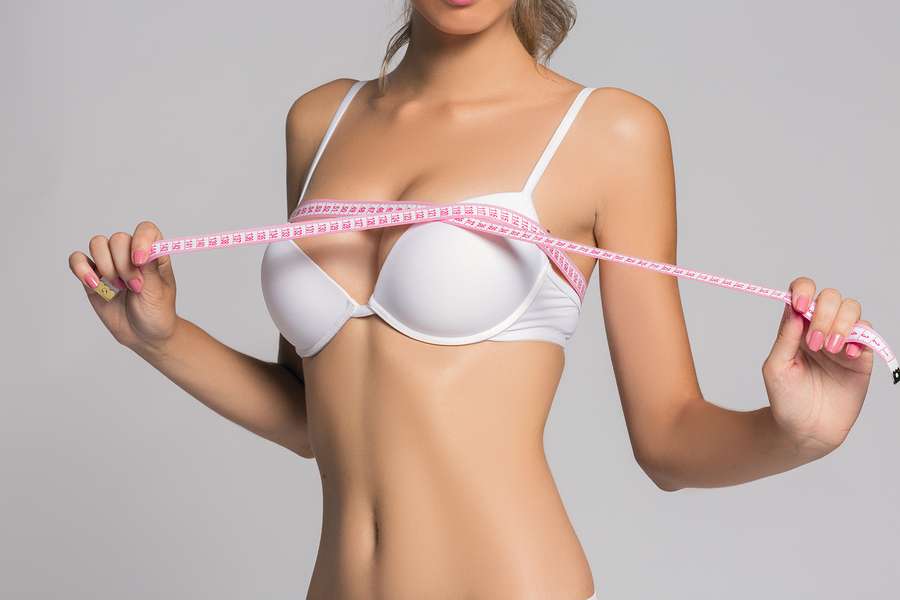
Nipple size or asymmetry is normal, even if they are different. This is an individual feature of the body. If your nipples have not become dramatically different, then there is no need to worry.
Changes in nipple size can occur during lactation. After stopping feeding, the nipple either returns to its previous shape or does not continue to grow.
If one nipple has suddenly become larger, this may indicate a hormonal imbalance. For example, such a side effect can occur from improper use of oral contraceptives. Also, an enlargement of one nipple is observed when one becomes overweight.
If, in addition to changes in size, swelling and lumps are observed in the breast near the nipple, then you need to visit a mammologist. When conducting a diagnosis, the doctor will either deny the presence of a neoplasm or confirm it.
Severity of the problem
Experts offer girls and women various methods of bringing their breasts to the same size. First of all, it is necessary to determine the degree of asymmetry. It can be light, medium, heavy.
If the asymmetry is slight, that is, hardly noticeable, it is enough to simply choose the right underwear.
If the degree is average, this is determined by a more pronounced asymmetry: one breast is one third larger than the other. This is clearly noticeable even if you wear the right clothes.
But if one breast is twice as large as the other, this is already severe asymmetry.

Breast asymmetry can be of different degrees
The criteria for determining the degree of the problem are the size of the base of the breasts, as well as the distance from the nipple to:
- manubrium of the sternum;
- midclavicular line to the border of the gland;
- folds under the mammary gland.
Factors on which the choice of correction method depends:
- size, shape of breasts;
- position of submammary folds;
- location and/or dimensions of the nipple-areolar complexes;
- confusing problems with asymmetry.

The doctor will determine the most optimal method of correcting the problem
During your consultation, a specialist will determine why your breasts are different sizes. It will also help with eliminating the defect.
Correction methods
Unfortunately, there are no conservative methods for correcting the pathology. Neither grandmother's poultices, nor food, nor exercise solve the problem.
During pregnancy and breastfeeding, it is worth taking care of the health of your bust, enrolling in breastfeeding courses, and caring for the mammary glands to prevent a noticeable discrepancy in size.
There is no satisfactory answer to the question of what to do if one breast has become larger. There are several options:
- use shapewear;
- seek help from a plastic surgeon.
Moreover, in case of injuries, consequences of cancer treatment or serious congenital deformities, there is no other way than plastic surgery (augmentation, reduction or mastopexy).
With this we say goodbye to you and hope for your regular visit to our website. Invite your friends via the Internet too.
Mastopexy
Surgery for prolapse (ptosis) of one or both glands. The chest is raised to a higher position.
Access can be made through the areola (periareolar mastopexy), T-shaped, vertical or anchor method.
The duration of the intervention is 2-3 hours. After mastopexy, a scar remains, which becomes invisible after a few months.
Reduction mammoplasty
Helps reduce hypertrophied mammary glands, get rid of excess skin and fatty tissue. During the operation, the nipple area is slightly raised. Access is carried out in a T-shaped, vertical or anchor way.
Note! If one breast is underdeveloped and the other is too large, a combination of reduction plastic surgery and endoprosthetics in one operation is allowed.
Lipolifting
Restoration of shape and volume is carried out with adipose tissue taken from other parts of the patient’s body. Typically, fat from the abdomen, buttocks and thighs is used.
Lipolifting helps increase breast size by 1-1.5 sizes. Due to the use of one’s own tissues, there is no rejection or allergic reactions after the intervention.
Using threads for correction
The procedure is performed without anesthesia and with minimal complications, however, it is not suitable for all women. Threads help restore shape if you have a second or third bust size.
The technique is used for sagging, sagging breasts after sudden weight loss, feeding a child, and with age-related changes, however, it does not help get rid of the defect in full breasts.
Installation of implants
The operation is indicated for hypoplasia, when one breast is underdeveloped compared to the other.
During the intervention, silicone prostheses are installed to correct the defect. An incision can be made underneath the gland, in the nipple area and under the armpits.
Change in size, shape of nipples and areolas
Plastic surgery is used for inverted or excessively convex nipples, their asymmetrical location, uneven contours, and excessive pigmentation of the areola area.
Correction is carried out both through surgery and non-invasive methods (micropigmentation).
The main ways to combat breast asymmetry
There are now a large number of effective ways to restore symmetry to breasts. A woman with different sized breasts can make them the same size again.
If the severity is mild, the doctor prescribes therapeutic procedures.
With the help of vacuum massage, you can bring blood circulation back to normal, and exercise therapy will make your muscles stronger. This will tighten the breasts, improving their shape slightly.
Although the result will be temporary, breasts with moderate asymmetry are tightened, and the defect becomes lighter.
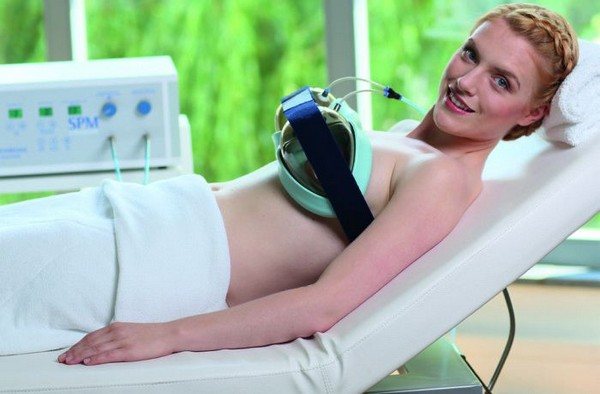
If the degree of asymmetry is mild, vacuum massage may help
There are also more radical measures:
- endoprosthetics with silicone implants. They are good for correcting many types of imbalances in proportion, including tubular breasts. Based on the state of imbalance, the doctor decides whether to install a prosthesis on one or both breasts. If on both, you will have to use implants of different volumes;
- lipofilling. This is taking the required amount of fat from some places on the patient’s body, which is then transplanted to other areas. In this case, into smaller breasts. Advantages: elimination of allergies, rejection, and capsular formation. The disadvantage is the inability to enlarge the breasts by more than one size, or to take enough fat from slender patients. There is also a high risk that the biomaterial taken from the patient himself will simply dissolve, thereby reducing the mammary gland and/or distorting its shape;
- mastopexy. This is a breast lift. For the most part, it treats mastoptosis - prolapse of the mammary gland;
- reduction mammoplasty, designed to make one mammary gland smaller.

You can resort to various procedures for breast correction
The fight against ptosis is quite often combined with the first or, alternatively, the last of the listed methods.
Menopause period
All changes in the mammary glands that occur between the ages of 43 and 48 (the onset of menopause) should be cause for concern. First of all, the woman examines them herself, and then turns to a mammologist. Not only asymmetry and differences in size can be alarming, but also tissue compaction, changes in the shape of the contours and halos around the nipples. All this signals serious diseases that cannot be left untreated.
Skin laxity and uneven sagging are sometimes observed and can be corrected with plastic surgery. But plastic surgery at this age is resorted to in exceptional cases. Since it is not the shape of the breast that is important, but its health. And during menopause, a woman’s breasts are one of the vulnerable organs.
It is necessary to do breast ultrasound and mammography twice a year to monitor the condition of the breast. Especially if asymmetrical sagging and size differences are noticeable.
When is it necessary and when not to perform mammoplasty?
The operation is prescribed for healthy women who have undergone a full examination, including by a mammologist.
Contraindications to it:
- diabetes;
- diseases of the heart and blood vessels;
- cancer;
- carrying/feeding a baby;
- lactation completed less than six months ago;
- health problems arising due to these reasons.

There are contraindications to mammoplasty
The doctor determines whether to perform the operation.
If it is decided to carry it out, the surgeon will take all the necessary measurements, and if it is planned to enlarge a smaller gland, he will also select an implant and specify the location of the endoprosthesis.
Computer modeling allows the patient to evaluate the planned result of the procedure even before surgery.
The doctor must inform the patient about all the risks and negative consequences of the operation. These include displacement of the implant, the appearance of capsular contracture, tissue scarring, hyperpigmentation, and skin death.

Negative consequences of the operation are possible, but they occur infrequently
There are no risks with the first operation against severe asymmetry of the mammary glands. With the second, they are already possible, although small. In total, mammoplasty causes complications no more than once in ten cases.
Recovery period after surgery
Immediately after surgery, the body must adapt. During the period when anesthesia wears off, a person may have a headache or malaise. It is better to be under constant medical supervision; it is even recommended to spend a day in the hospital. Bandages are applied to the chest and a holding bra is worn. Dressing and suture removal are performed according to schedule.
The patient also takes antibiotics or other anti-inflammatory drugs to avoid complications. After the stitches are removed, small scars may be visible on the skin, which are treated with ointments.
After a couple of months, the skin should even out in color and texture. After 6 months, the last traces of the operation disappear. A woman should undergo an examination at least once a year.
Breast asymmetry is a normal phenomenon in women of any age. If the difference between one and the other breast is dramatic or causes discomfort to the woman, then she should visit a doctor. The main thing is to pay attention to the mammary glands, monitor their condition and have them checked by a doctor in a timely manner.
Popular questions
What is the recovery time after surgery?
The body recovers after this operation in at least a couple of months. The result is revealed in all its glory after six months to a year.
Will exercise help make breasts symmetrical?
Exercise therapy will never enlarge the mammary glands themselves. They will only pump up the muscles underneath. The condition of the breast will return to normal, but more or less pronounced asymmetry cannot be corrected.

Exercises will not give bright results
Which method is recommended?
Here you need to look at the situation. For minor defects, lipofilling may be useful. But if it is severe, it is more advisable to resort to endoprosthetics. Be that as it may, you first need to consult a surgeon.
How much money will you have to pay?
Here are the average Moscow price tags for breast restoration of the same size (in thousands of rubles):
- vertical mastopexy - 125;
- reduction mammoplasty - 159;
- endoprosthetics - 155;
- lipomodeling – 150.

The cost of the procedures is rather high, but they never cease to be popular
These prices are very high, but plastic surgeons who perform breast surgery still have no shortage of clients.
Are different breasts normal?
There are no identical things in nature.
A symmetrical face is the work of a surgeon, bust, check with a plastic specialist. There are exceptions, but not often. The bust is not normally symmetrical. Asymmetry is possible due to the location of the heart. If the gland is small, it is noticeable.
The question remains, how much asymmetry is acceptable? You won’t notice a difference of 0.5 sizes, but 2 sizes is inconvenient and not always the norm. To eliminate this “pathology” you will need an endoprosthesis.
If the difference is not radical, but moderate. Let's try to fix it ourselves (Taoist massage, exercises).
Now we are not talking about illness or deformation associated with a previous operation. We'll talk about diseases below. And in this case, we go to the doctor, rather than correcting the “defect.”
An interesting trend noticed by doctors
Experts expressed an opinion worthy of consideration regarding the difference in breast size. It says that those at risk are those representatives of the fair sex who are often in a bad mood or simply stressed. Let's talk in more detail.
Actually, this is quite logical. This is because with constant discontent and neuroses, the risk of stagnation in the liver and gall bladder greatly increases. This affects the muscles of the chest. Consequently, the nutrition of one of the mammary glands suffers. Then, if it continues to grow at all, it is at a much slower pace.

Girls who are often stressed or angry are more susceptible to this problem.
But this is not a reason to despair and give up. You just need to experience more joy and other positive emotions, drawing them, for example, from communicating with loved ones.
Types of asymmetry
Taking into account the difference in size, three degrees of disproportion are distinguished: light (the mammary glands differ slightly from each other), medium (one breast is 25–50% larger than the other), severe (the difference is more than 50%). Asymmetry of the mammary glands is divided into 4 categories according to the nature of the changes:
- Unilateral hypoplasia: one gland becomes smaller, the second retains its original size.
- Bilateral hypoplasia: there is an uneven reduction in both breasts.
- Unilateral hyperplasia: an enlargement of one gland is detected while maintaining the original size of the second.
- Bilateral hyperplasia: both breasts have become larger, but have changed disproportionately to each other.

If the decrease and increase occurs while maintaining the general shape of the gland, then we are talking about non-tubular deformation. This modification often occurs with hormonal imbalance. Scarring, inflammation, benign and malignant neoplasms cause focal tubular changes. Because of them, not only the volume, but also the outline of the breast changes (sags, becomes pear-shaped, skewed, with a stretched or, conversely, wrinkled areola).
We recommend reading: What you can take for headaches during breastfeeding
Ways to visually hide breast asymmetry
For a minor flaw, the following may help:
- blouses with a pattern, say, polka dots;
- diagonal stripes upward from low chest;
- placing the breasts under figure-concealing clothing - a decorative scarf, neckerchief.
Choosing the right bra
This piece of clothing should be chosen for the largest bust. The cup should not be too small, otherwise it will squeeze.
Some women need not only to choose underwear in the right size, but also to correct some other features of their figure and breasts. Moreover, among these problems the leader, again, is asymmetry.

You can choose suitable underwear to hide asymmetry
A little asymmetry is normal and even inevitable. There is no perfect symmetry of the mammary glands. Every woman's breasts vary at least a little in size. Moreover, most often this is noticeable in young mothers who have just weaned their babies from the breast.
Here it is not even necessary to resort to the services of a plastic surgeon. You just need to choose the right underwear size and style for yourself.
When choosing a bra, you need to use an individual approach. However, there are certain general rules to make it easier not to make a mistake with your choice.
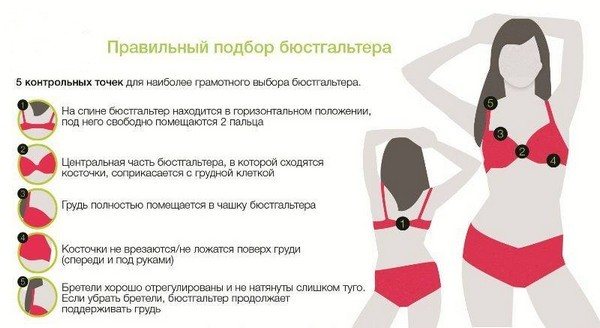
It is important to choose the right bra
The surgeon screwed up
Modern methods of endoprosthetics are being improved. Frank non-specialists do not sit in the chairs of practicing doctors. But, the difference in the size of the glands may be associated with the prosthesis after mammoplasty if:
- the prosthesis is not fitted correctly;
- the patient did not comply with the rehabilitation regimen;
- I chose a cheap saline prosthesis, but it simply burst (the rupture of a modern implant is not visible on MRI, but not visually);
- got into an accident;
- The client develops a contracture.
Breast asymmetry after mammoplasty
Less commonly, asymmetry appears after surgery for a bust lift or gland reduction. In this case, no exercises, selection of underwear, no push-ups or inserts in the bra. Let's go to the doctor who performed the intervention.
Measures required in various cases
Mild asymmetry of the mammary glands
More than half of the happy owners of almost completely identical breasts themselves do not notice such a tiny flaw, which, to such a degree of severity, is not even such. The matter is discovered only if such a woman chooses the wrong bra, where one of the cups is slightly too big for one breast. This problem is easy to solve by choosing underwear with elastic lace or, alternatively, one where the top of the cup is supplemented with something elastic.
What is the point of this approach? The whole idea is not complicated: when putting on a bra, the difference in breast size can be seen only by looking at the top of the cup. This top either compresses one mammary gland, or one cup remains empty. The elastic top would fit snugly to any breast, adapting to the desired shape. And then the slight asymmetry is not visible to the eye.
Average asymmetry
Quite a few women have a more noticeable difference in breast size. Then soft cups are useless. You need to choose models that have a dense molded cup. Ladies with large breasts may say that this can visually enlarge their breasts even more. But this would be misleading. Contrary to a very common stereotype, dense bra cups do not have a push-up effect at all. Moreover, they even visually reduce breast size.
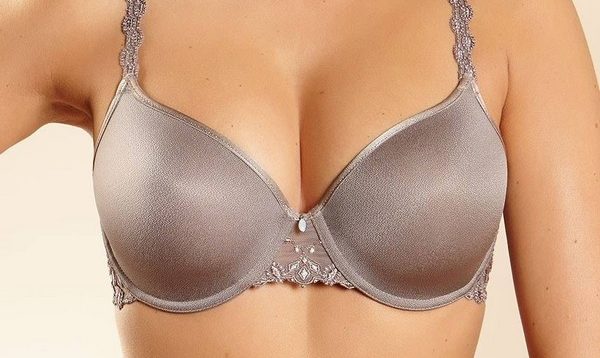
For women with average breast asymmetry, it is better to choose bras with a dense cup
This bra also has a positive effect on hiding asymmetry: the entire breast is hidden behind a dense cup, which creates a corresponding rounded shape. Asymmetry is corrected with adjustable straps. On the side where the chest is larger, the strap can be loosened, and on the side where the chest is smaller, the strap can be tightened.
Severe breast size difference
A pronounced breast difference, which cannot be hidden even with the right clothes, is usually the result of improper lactation and/or surgery. In principle, you can contact a plastic surgeon to correct it, but there is also a way to correct the matter that is not so aggressive towards the body. For example, asymmetry of two sizes can be hidden by combining a bra with a thick cup and a special insert for it.
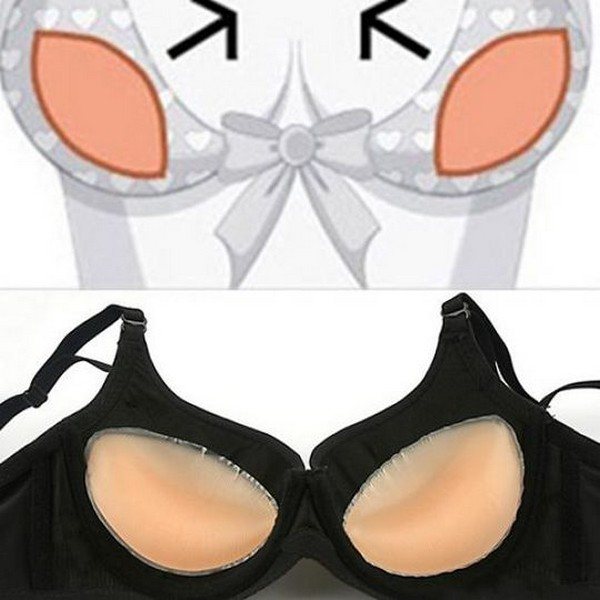
You can use special inserts
If the bra does not fit well, leaving a large space between the cup and small breasts, you can resort to “heavy artillery” in the form of silicone and foam pads. If such an insert is placed under the smaller breast, the breast will appear more symmetrical. To prevent the fears of the readers of our article, we must say that such inserts are quite pleasant to the touch, look natural, and it is almost impossible to notice them under clothing.
We hope you find this information helpful in finding the best bra for you. However, for any unpleasant features of the mammary glands, including asymmetry, it is recommended to consult a doctor. Even if it is impossible to come to the clinic, you can always talk on Skype to choose the underwear that suits you personally. Good cosmetology clinics will always be able to help you choose a bra that suits you personally.
What types of asymmetry are there?
Diagnosed breast asymmetry can be of the following types:
- Hyperplasia of one mammary gland: a hypertrophied state of enlargement of one gland in relation to the normal second.
- Hyperplasia of two mammary glands: asymmetrical enlargement of both glands.
- Hypoplasia of one mammary gland: underdevelopment of one gland with normal shape and size of the second.
- Hypoplasia of two glands: underdevelopment of the entire breast to varying degrees, possibly combined with breast ptosis - ptosis.
- Hypoplasia of one gland and hyperplasia of the other: asymmetry with underdevelopment of one breast and enlargement of the other.
- Unilateral underdevelopment of the chest area, mammary gland and pectoral muscles.
What patients say
Elena, 22 years old, Voronezh
“To restore symmetry to my breasts, I resorted to lipofilling. They took some fat from my sides and then injected it into the one breast that was much smaller than the other.
The treated breast is comparable to the larger one, and the effect will last for years. But I still advise you to apply correctly during lactation.
My son would never accept my left breast, he had to feed only the right one. And this stimulated milk production in the right breast, but only suppressed it in the left. I even pumped with the left one, and constantly. There was still a misalignment. Moreover, I discovered it too late to take effective measures on my own. After lipofilling the situation improved significantly. Both my husband and I are delighted with the result.”
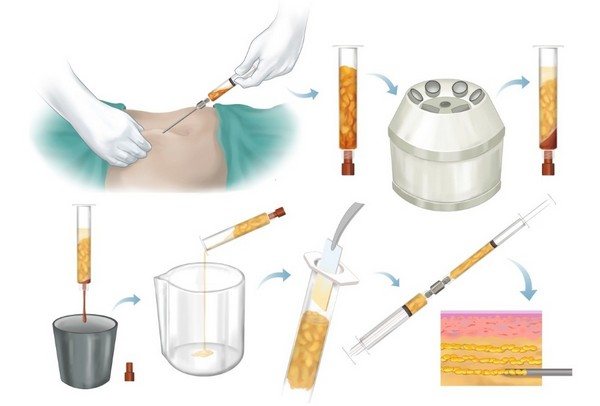
There are many positive reviews about lipofilling to correct breast asymmetry
Alisa, 25 years old, Moscow
“In order to correct breast asymmetry, you will have to have surgery. The matter will not improve on its own. My breasts were at different heights. And given the first size, the flaw was very noticeable and significantly spoiled the appearance. Having resorted to plastic surgery, I got rid of the problem. She also enlarged her breasts to size 3.
After the operation, my breasts became simply lovely. One method made it possible to achieve two goals at once - asymmetry correction and breast enlargement. And all this thanks to the high professionalism of the doctor.”
Maria, 29 years old, Novosibirsk
“Without plastic surgery, breasts cannot be made symmetrical. If the flaw is mild, it is best to resort to lipofilling.
And if it is more pronounced, like the degree of asymmetry that I had, you also need to go to the clinic. Personally, the doctor advised me to undergo endoprosthetics with implants of various sizes.
To have the same type of breasts, it was necessary to perform surgery on both simultaneously. The surgeon took a long time to measure the breasts and in the end chose the size of the implants perfectly.”

Girls confirm the effectiveness of plastic surgery in combating this problem
Breasts changed after breastfeeding
If one breast is smaller than the other during feeding, and there is no reason for this related to disease or damage to the organ, then the situation can still be corrected by more frequent attachment of the baby to the breast that turns out to be smaller in size. In addition, you need to carefully monitor that the child drinks all the milk from it, and if this does not happen, express all the remains dry.
You can prevent the formation of asymmetry of the mammary glands, as well as the occurrence of painful cracked nipples and bitten breasts long before the baby is born. Often the reason for refusal to suck on one breast or damage to the baby's gums is the structure of the nipple. It can be flat or retracted, as well as “tight”, that is, narrow, poorly releasing milk.
This structure interferes with sucking, and the baby refuses this breast, preferring the second one, with a more “comfortable” nipple. You can prepare your breasts for feeding by stretching the nipples with a massage and carrying out hardening procedures. A gynecologist or obstetrician at the antenatal clinic can familiarize you with them. Such simple actions can prevent the development of asymmetry.
She fed and fed... And with more breasts, it just so happened. I took the child away. I didn't want to let go. Conclusion: feeding rules were violated and asymmetry developed.
We comply with the rules of the Civil War. We give breastfeeding as soon as the child asks to eat. We apply it sparingly. Give it to your chest, and everything will be fine. We take care of fabrics.
If initially one breast was smaller. With breastfeeding (breastfeeding), the rules change. There are 3 leading aspects:
- We begin to feed the baby with the small (smaller) gland.
- To increase the flow of milk, we use a breast pump.
- More often we give smaller breasts, stimulating the child to eat from the small gland.
The latter is difficult to do if there is little milk. That's why we're pumping. Using your hands (just be careful not to stretch the skin or suck out the milk).
After finishing G, there is a chance that your bust size will even out.
Moreover, if you want to make your breasts the same and maintain their elasticity, you will need our advice on how to do this during pregnancy and lactation.
It is already clear that if one breast became larger after pregnancy and breastfeeding, you were feeding the baby incorrectly. The child helped you stretch the tissue. Tutselykh2 options:
- wait for the 2nd birth and correct the situation;
- if the breasts are not very different in size, wear pads in the bra, and do exercises to tighten the skin so that the underlying tissues do not sag (read about this in our special articles) tighten the “sagging” breasts; the difference will not be so noticeable;
There is really a 3rd way out: if the operation does not bother either the woman or her man, then you can turn to a plastic surgeon.
What the professionals say
Elsa Borodina, surgeon
“With lipofilling, slightly less than one third of the transplanted fat mass survives. So for the desired effect you need to carry out two or three procedures.”
Irina Dorofeeva, cosmetologist
“Statistics show that four out of five women have breasts of different sizes. Usually this difference is so small that it is difficult to notice. However, there are also cases of great asymmetry. There are women whose glandular tissue develops poorly - this is hypoplasia, which can be corrected with plastic surgery. And there are those who have the same tissue, on the contrary, growing very quickly. This is already macromastia. Such women should contact a mammologist, who will find out the cause and also prescribe a course of therapy.”

Doctors recommend not to delay contacting a mammologist
Possible tumor!
What to do if the breasts were symmetrical, at least relatively, and then this changed? Contact a mammologist urgently:
- Temporary enlargement of the breast, swelling, pain, and damage to the affected side accompany mastopathy. Usually women say “these breasts have turned to stone.”
- Deformation of the gland, changes in skin color, peeling, retraction of the nipple - a sign of cancer.
- You notice an enlargement of the breast, and then a decrease in pressure on the pump (this releases bloody contents). This speaks of intraductal papilloma.
Even if the contours of your bust have simply changed, but nothing hurts, go to the doctor. Fibroadenoma may not cause pain, but it hurts at the last stage, when it is almost impossible to correct anything.
The main thing in this case is to determine the quality of the process. If, after mammography, ultrasound and puncture biopsy of the breast, specialists conclude that there are no symptoms of breast cancer, the woman can limit herself to non-drug treatment. This includes, first of all, the normalization of sexual and reproductive function. Stimulation of the smaller mammary gland will promote the production of hormones and, accordingly, the growth of this organ.
A special role is given to diet correction. The patient should exclude from the diet foods that cause gastrointestinal disorders and lead to the development of metabolic and hormonal disorders in the body. Recommended daily consumption:
- fish,
- seafood;
- wholemeal bread;
- dried apricots;
- raisins;
- various vitamin and mineral food supplements.
If a process in the mammary gland requires special drug treatment, doctors suggest using the following regimen:
- hepatoprotectors to normalize metabolic processes in the body;
- psychotropic drugs to relieve various phobias associated with breast disease;
- vitamin complexes;
- homeopathic medicines to normalize a woman’s hormonal levels (especially mastodione and clamina).



